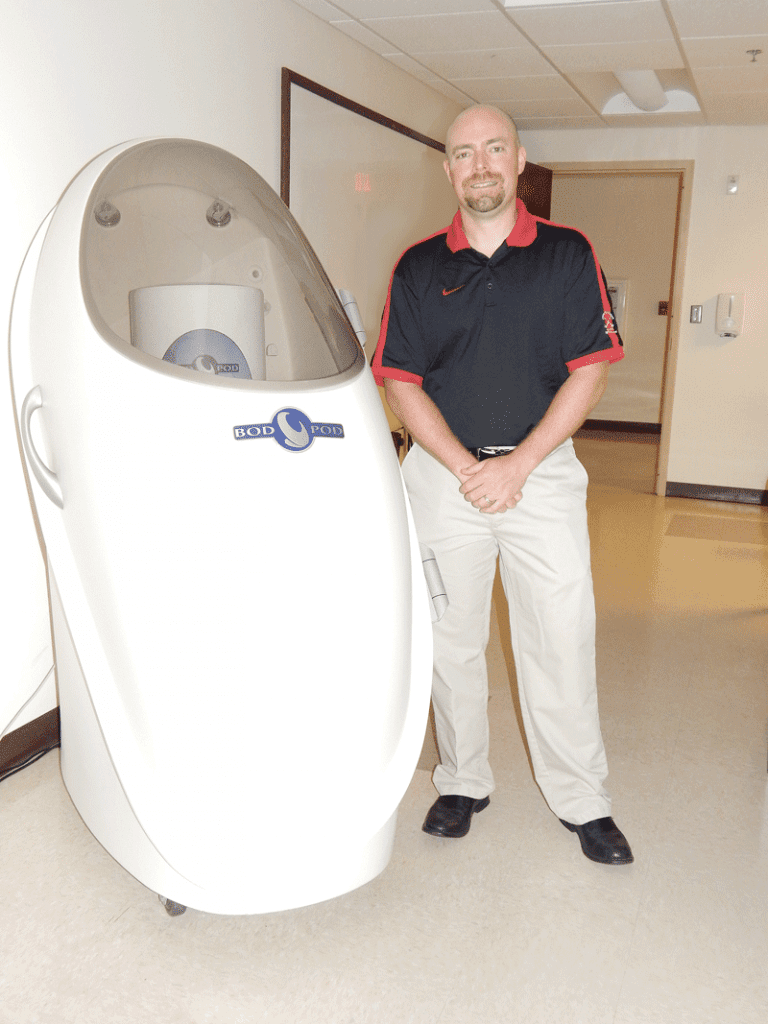Diet Dangers – Educator Sheds Some Light on Carbohydrates and Health
Which of these foods contains the smallest number of carbohydrates: a can of soda, a bread roll, or a bowl of rice?
“It’s a trick question, and although they may differ in fats, vitamins, and other nutritional content, when it comes to carbs they are all the pretty much the same,” said Richard Wood in January during a TED-ED lesson which has been viewed more than 800,000 times.
The associate professor at Springfield College has done a tremendous amount of research, published extensively, on the relationship between carbohydrates and health — one of many ongoing, innovative projects in the college’s Exercise Science and Sport Studies Department aimed at helping people live healthier lives.
Wood believes many people don’t have the basic facts they need to make informed dietary choices. In fact, when people find out he is a professor of nutrition, he is often cornered and besieged with questions, and many of them concern carbohydrates, which have been controversial for years, especially in relation to weight loss.
Supporters of low-carb diets swear by the results, and many follow the popular Atkins Nutritional Approach or Atkins diet, which was developed in the ’70s by American cardiologist Dr. Robert Atkins. It emphasizes protein and fat as the primary sources of dietary calories, in addition to a controlled number of carbohydrates from vegetables.
But detractors cite studies showing that low-carb diets don’t lead to long-term, sustained weight loss, and say it takes exercise and a balanced diet that includes a variety of complex carbohydrates to provide the body with the nutrients and sugars it needs.
Wood says understanding the relationship between carbohydrates, energy, and the body is complex, but eating too many carbs can lead to a condition called insulin resistance (more about that later), which spells trouble in terms of health.
“Many scientists believe insulin resistance is the hallmark of obesity and can lead to the development of type II diabetes, as well as other serious health issues that include metabolic syndrome, kidney problems, cardiovascular disease, and more,” he noted.
But these conditions are usually preventable, he added. “They can be nipped in the bud if people take action by changing their diets and getting more exercise.”
He advises people to have their fasting blood-sugar level checked annually, which can help determine how well their body is tolerating carbohydrates. It’s a critical piece of information, because type II diabetes is diagnosed when the fasting blood-sugar level reaches 126 or higher.
The disease decreases the body’s production of insulin, which is the primary hormone that regulates blood sugar. If this occurs, sugar continues to build in the bloodstream that can lead to damaged nerves and blood vessels. An unmitigated rise in sugar also increases the risk of heart disease and stroke, and over time can cause kidney failure and blindness.
So, it’s critically important for people to know if diabetes is prevalent in their family history, pay attention to how they feel in response to what they are eating, and be aware of the effects that a diet high in carbohydrates can have on their body.
Science Lesson
Wood says the first step in understanding the relationship between carbs and health is to understand exactly what they are.
“Carbohydrate is an umbrella term for foods made up of sugar units. Examples of foods made of predominantly carbohydrate are bread, crackers, potatoes, and chips,” he explained, adding that the body breaks all carbs down into simple sugar, most of which is known as glucose.
However, carbohydrates fall into two categories. The first is simple carbs, which are found naturally in foods such as fruit, milk, and milk products, as well as processed and refined sugars that include candy, table sugar, baked goods, ice cream, and soft drinks.
The second is complex carbohydrates, which are made of starches and fiber found in plant products. Their sugar molecules are strung together in long chains and can be found in foods such as peas, beans, whole grains, and vegetables.
But foods can contain both simple and complex carbs; for example, the skin of an apple is a complex carbohydrate, while the fruit inside is a form of stored sugar.
The body needs glucose to live, but Wood said food must be digested and move through the gastrointestinal tract before this sugar is accessible, and since it is absorbed almost entirely into the bloodstream, it’s important to keep blood-sugar levels stable.
Spikes in blood sugar are followed by a rapid descent, which can happen when people ingest too many simple carbohydrates. Although they feel energized at first, when their blood-sugar level drops, they become exhausted.
Which takes Wood back to a basic science lesson. “When sugar levels rise in the bloodstream, it signals the pancreas to release insulin,” he said. “The insulin signals the cells to let glucose in, where it can be converted to usable energy or stored.”
Insulin acts on many cells in the body, especially those in the liver, muscles, and fat tissue, and is one of the body’s main tools for sugar management.
The body’s systems are normally balanced, and stay that way if people eat a healthy combination of foods. But if a person eats a large number of carbohydrates over an extended period of time, they can develop a problem called insulin resistance. It occurs when cells are continually exposed to insulin; after a while, they stop responding instantly, which means an increasing amount of insulin is required for them to get the glucose they need.
“Imagine you are sitting on your couch, and the doorbell rings. Most of the time, you would get up on the first ring and answer the door,” Wood said, adding that this is an example of being insulin-sensitive. “When the insulin interacts with the cell, the cell takes glucose out of the blood. But insulin resistance is different.
“Now imagine you are the person ringing the doorbell,” he went on. “If you know the person is home and they don’t answer the door after you ring the bell, what would you probably do? Most likely, ring the doorbell again, maybe a couple of times. This is the example of what takes place in insulin resistance. It takes more of an insulin stimulus to get the same response from a cell to let it in.”
Wood said insulin resistance can result in serious health problems. If someone’s blood sugar remains elevated for a period of time, it can bind with the proteins or fats in tissues in their kidneys, or inside their blood vessels, and damage their ability to function, which can then lead to kidney and cardiovascular disease.
“Many scientists believe that insulin resistance also leads to metabolic syndrome, which causes high blood sugar, high blood pressure, and an increase in waist circumference,” Wood told HCN, adding that an estimated 32{06cf2b9696b159f874511d23dbc893eb1ac83014175ed30550cfff22781411e5} of the population has metabolic syndrome.
The syndrome can also cause the person to gain weight and have a high percentage of body fat. “When fat cells don’t want to take in any more fuel, the body makes more fat cells, enabling the storage of more fuel,” Wood explained, adding that leading researchers believe it’s possible to reduce the size of fat cells, but not their number.
“So if someone is obese and loses weight, they are at risk of gaining it back because the additional fat cells are always there,” he continued. “Many people are told that if they just use more willpower, they can control their eating, but it’s not that easy because the body sends powerful signals telling us to eat when our cells need energy.”
Diabetes mellitus type 2 is another metabolic disorder characterized by high blood sugar and insulin resistance. In addition to obesity and diabetes, high blood sugar in diabetics can damage the small blood vessels farthest from the heart, which reduces their ability to transport oxygen and nutrition and remove waste products. When this situation becomes pronounced, it can lead to limb amputation.
These health conditions are serious, but since people have different tolerances for carbohydrates, there is no way to determine the tipping point for each individual.
However, scientists do know a person’s tolerance can change based on their age and activity levels.
“A 17-year-old cross-country runner may be able to eat waffles with maple syrup every day and lots of other carbohydrates without a problem,” Wood said, adding that, if the runner become sedentary and continues the same eating pattern over a 20- or 30- year period, he may develop health problems.
Indeed, individual differences vary greatly. Although most people who develop type II diabetes are overweight, about 10{06cf2b9696b159f874511d23dbc893eb1ac83014175ed30550cfff22781411e5} to 20{06cf2b9696b159f874511d23dbc893eb1ac83014175ed30550cfff22781411e5} never become obese and have no outward signs of the disease — which can make it more difficult for doctors to treat them, because people find it hard to change their diets if they are not overweight and don’t have symptoms indicating a problem.
“But a third of the people in the U.S. with type II diabetes don’t know it and are not getting any treatment,” Wood said.
Preventing Problems
Understanding carbohydrates and how they work in the body can make a major difference in helping people to curb their intake, which in turn can prevent health problems.
“Too many carbs can be a problem, whether your food tastes sweet or not,” Wood said. “Insulin resistance happens on a continuum, but you can improve it. You can’t reverse the tissue damage it causes, but you can reduce its progression.”
He added that exercise also plays a major role because it lowers blood sugar. “It’s like the cells in the muscles have two doors: one opens in response to insulin, and the other opens in response to muscle contraction. Just the fact that the muscles are contracting is a signal for the cells to take sugar out of the blood without insulin.”
So, when it comes to making healthy choices with nutrition, according to Wood, one of the best things you can do is know yourself.
“Knowing yourself means understanding your family history, your own current health as assessed by your primary-care physician, and your daily patterns,” he told HCN. “If you have a strong family history of type 2 diabetes, or have been told by your physician that they are keeping an eye on your sugar levels, it is time to take a look at your carbohydrate intake.”


